Last Updated on December 10, 2023
Percolator coffee gave way to drip coffee in the 1970s in most households, but it still has its devotees today.
The two coffee brewing methods have a lot in common. Both use a bottom chamber for heating water, which then rises to an upper chamber that contains the grounds. The water is released and drips through the grounds to produce coffee.
That’s where the similarities end, and it’s the differences in the brewing method that contribute to the differences you’ll taste in your cup:
| Percolator coffee | Drip coffee |
|---|---|
| bold and strong | milder |
| may contain oils and sediment | clean cup, free of oils and sediment |
| lacking nuance in flavour | subtle flavours are easier to detect |
Let’s talk about how they get there.
Brewing Coffee in a Percolator
The coffee percolator was invented in the late 19th century, so it had a good 80- or 90-year run.
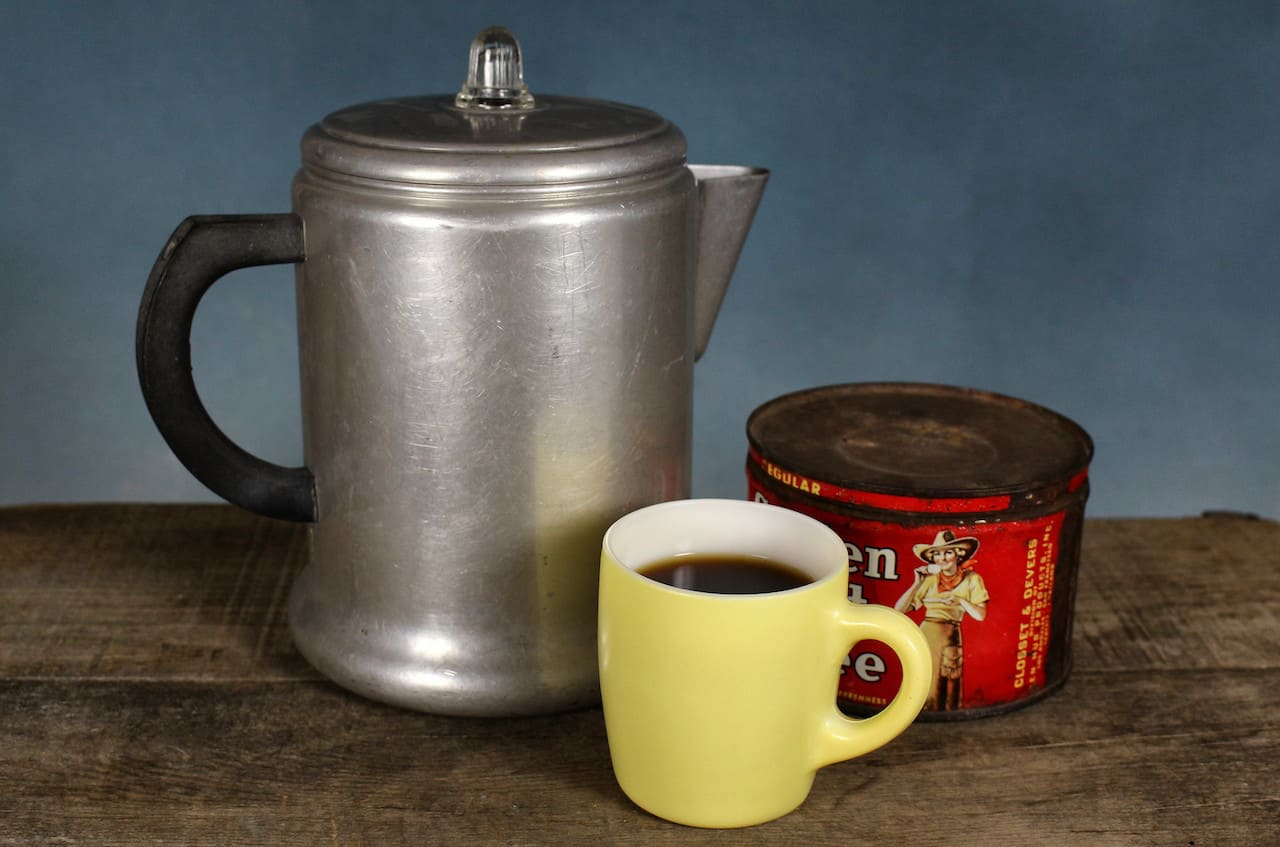
It was the right machine for more primitive times, because the metal ones can make coffee over an open flame. In fact, to this day it’s still one of the more popular coffee contraptions for camping enthusiasts.
Of course, we now have electric versions as well that you can just plug in and leave on the counter to brew.
If you are looking for a plastic free coffee maker, there are a lot of choices in the percolator category.
How a Coffee Percolator Works
The bottom chamber contains the water. A hollow metal tube rises up vertically from the water chamber, straight through the centre of a circular tray—usually stainless steel—that contains the coffee grounds. The tray is covered with a perforated metal lid called a spreader plate. Its bottom is a porous filter.
As the water heats, it rises as steam through the long tube and condenses in the upper chamber. This condensation drips onto the spreader plate, then through the holes which are designed to distribute water evenly over the grounds below. The water runs through the grounds then drips again through the bottom filter and back into the main water chamber, as coffee.
What makes the percolator unique is that this cycle repeats. The water in the bottom chamber now includes some coffee, and it rises up through the tube. With each cycle, the concentration of coffee in the lower chamber becomes greater.
Brewing Drip Coffee
Drip coffee is essentially an automated version of pour-over coffee. I grew up in a pour-over household. To me, making coffee meant boiling water in a kettle, putting grounds inside a filter inside a funnel, then adding the water slowly and waiting for it to drip right through into a carafe.
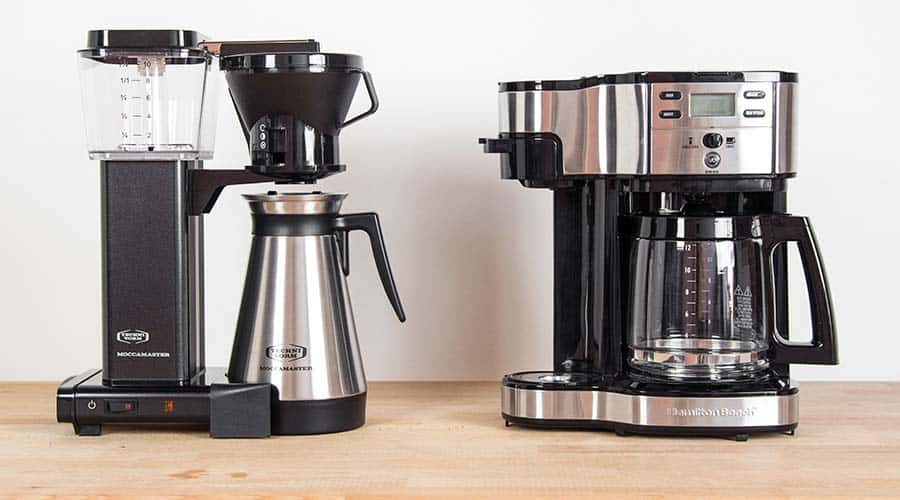
It wasn’t until I took a close look at the coffee machines in hotel rooms on family vacations that I realized they were doing the same thing—only with electricity and buttons. Given their ease of use, it’s no wonder they largely displaced the percolator.
How a Drip Coffee Machine Works
A completely separate water reservoir is the first big difference between a drip machine and a percolator. A heating element warms the water in the reservoir, and when it’s near the boiling point it rises in a combination of steam and bubbles through a narrow tube similar to the one in a percolator. When it reaches the top, a valve resembling a shower head distributes it evenly across the grounds, which are held in a paper filter above the carafe.
The water runs down through the grounds, extracting coffee as it goes. At the bottom it funnels through an opening and drips into the carafe as coffee. The carafe sits on an element that keeps the coffee warm.
You can see the big difference here: drip coffee passes through the grounds exactly once. There is none of the cycling you get with a percolator.
Differences Between Percolator and Drip Brewing
Percolator Coffee is Bolder Than Drip
You can understand why percolator coffee tends to be bold and strong. The liquid passes through the grounds over and over again. Time is a factor. The longer you brew it, the stronger it gets. If you brew it too long, the coffee grounds become over-extracted and the coffee takes on a bitter taste.
This won’t happen with drip coffee unless you grind it very fine. Drip coffee will be milder, but will allow the character of the bean to shine through.
Brewing with a Percolator Requires More Attention
Time and temperature matter with percolator coffee, and if you’re brewing it on the stovetop, it’s up to you to regulate. The water should consistently be almost boiling, but not quite. If it’s too hot you risk burning the grounds, which will also impart a bitter taste.
A drip coffee maker regulates time and temperature for you, using electronics. You don’t have to do as much babysitting as you do with a stovetop percolator.
A Percolator is Best for High-Volume Brewing
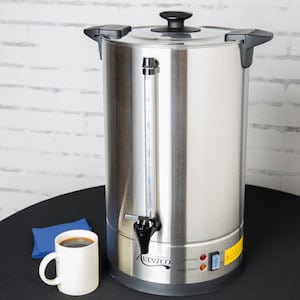
Percolators are great for big batches. While most drip coffee makers max out at about 10 or 12 cups, one of the best coffee percolators is the Presto 12-cup which is a pretty standard size for a percolator. They’re great if you entertain a lot of large groups. In fact, those giant metal urns you see at weddings and banquets are percolators. They can make a lot of cups in a short period of time. If you find yourself needing one, we have a guide on how to use a large coffee percolator.
Grind Size
You should use a fairly coarse grind for percolator coffee. Remember, there’s no paper filter, so the larger your grounds are the less sediment you’re like to find in the coffee. Coarse grounds also don’t fully extract as quickly as fine ones, so it’s a bit of a safeguard against over-extraction and bitterness.
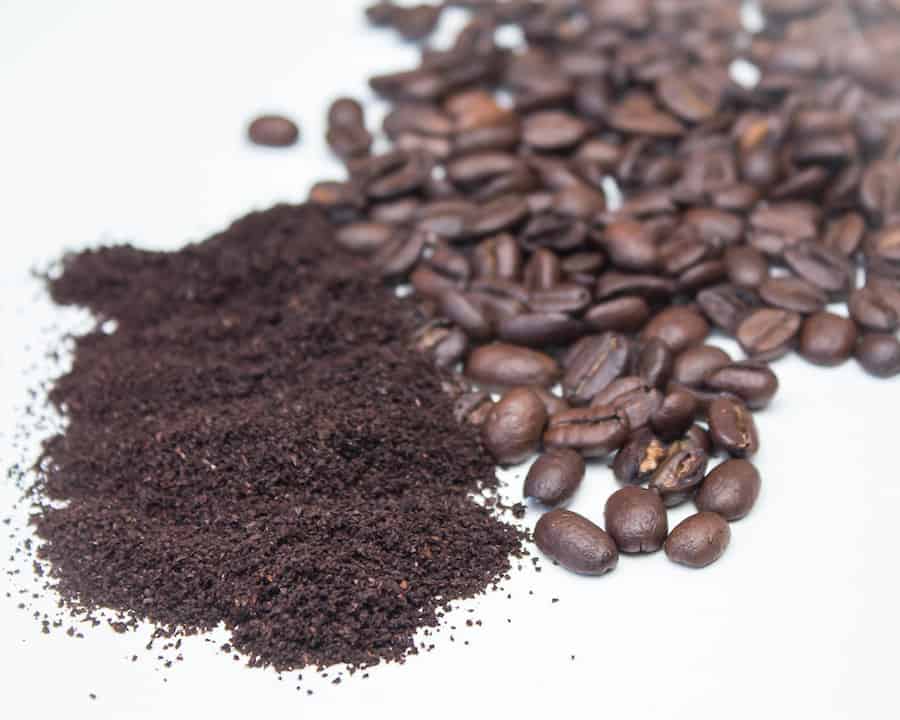
For drip coffee, you should go with a medium grind or medium-fine, depending on the shape of the drip funnel. Medium-fine is best for a flat-bottomed funnel, but will likely cause some backup in a conical funnel. That slows down the extraction time and could lead to over-extraction. So use a medium grind for a conical funnel.
Little Coffee Place has a great guide to grind size for just about every brewing method.
Cost
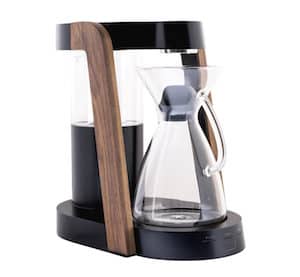
Good news—there isn’t much difference in price, so it probably won’t be a big factor in your decision. Unless, of course, you’re eyeing the Ratio Eight, which is about the fanciest drip machine we’ve seen.
I hope this overview has shed some light for you on the difference between percolator and drip coffee. They’re both totally legit—and super easy—methods that can brew some great coffee. It’s really just a matter of what you’re after: a bold, no-nonsense cup of coffee, or something a little more refined.

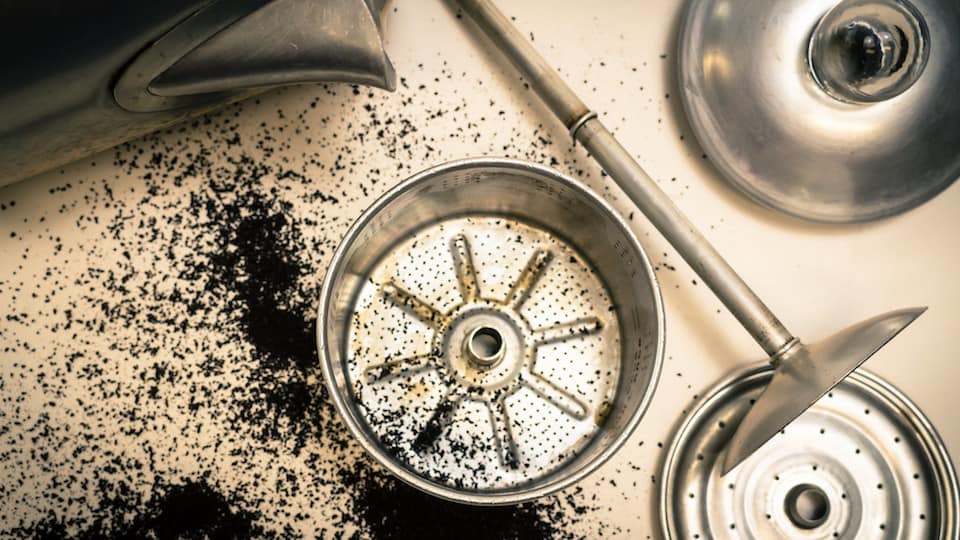

Thank you so much! You’ve thoroughly answered my question of how my coffee being made each day for decades by me! Hahaha, I’ve been drip making it. Anyway, I like stronger coffee and am investing in a percolator. Thanks!!
the basket of my percolator gets clogged. it is very difficult to clean it. Do you have any suggested products to use to clean the basket. I have tried CLR, baking soda, and vinegar but nothing seems to work. I keep buying basket replacements.
Thank you